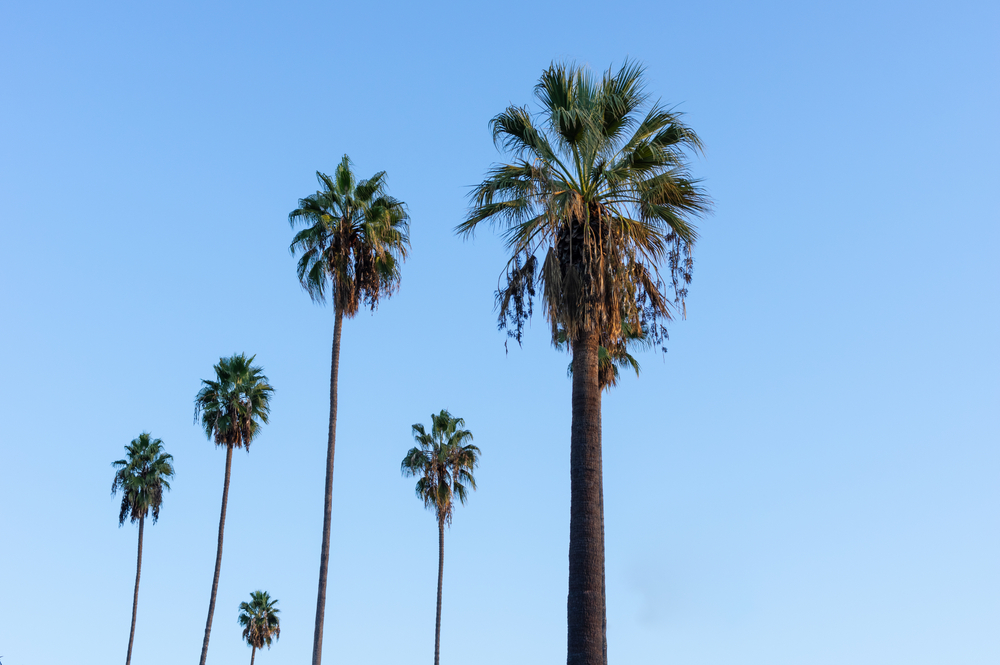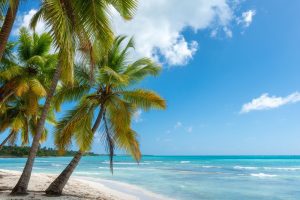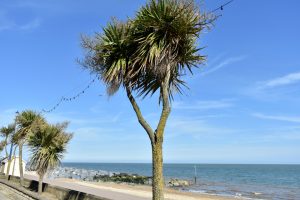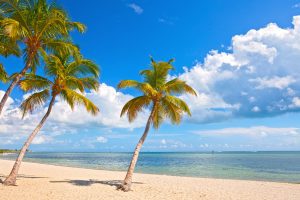Mention California to anyone, and they will immediately think of palm trees. Palm trees have become an iconic symbol of California’s vast desert landscape, making it a quintessential paradise for many.
Although palm trees can also be found in Florida and Texas, California is considered a tropical oasis for palm trees and is home to several types of palms despite the rarity of native palm trees.
Of all the palm tree species found in California, only one is native – the California fan palm.
The rest of the palms found are imported from other countries, including the beach palm, classical king palm, dwarf sugar palm, Mediterranean fan palm, miniature blushing palm, pindo palm, queen palm, true date palm, and Washington fan palm.
Table of Contents
1. Beach Palm (Allagoptera arenaria)
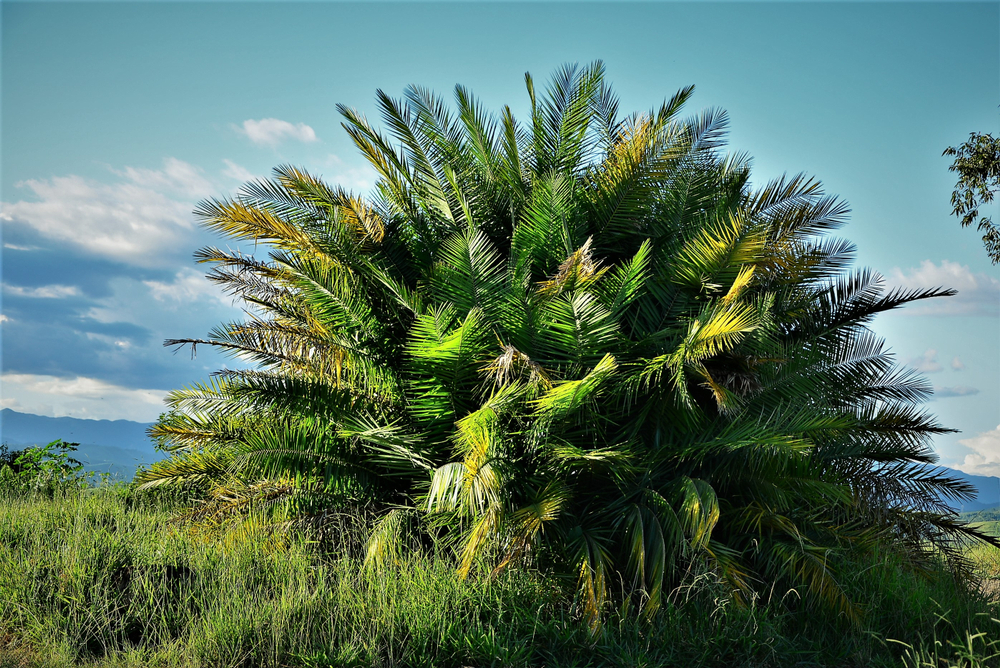
The beach palm is also known as sand palm or seashore palm, and it originates from Brazil and Argentina.
It is an easy-to-manage ornamental palm that grows up to six feet in height – making it a small pinnate palm – with a crown of up to 15 leaves on each stem.
Its bright green leaves are short, curled, and pendulous. The fruits it bears are usually coconut-shaped and are yellow to green in color.
In order to grow beach palm trees, the tree must be exposed to full sunlight and the temperature must be at least 24°F. It is a strong palm tree that can tolerate wind, dry heat, and salt.
2. California Fan Palm (Washingtonia filifera)
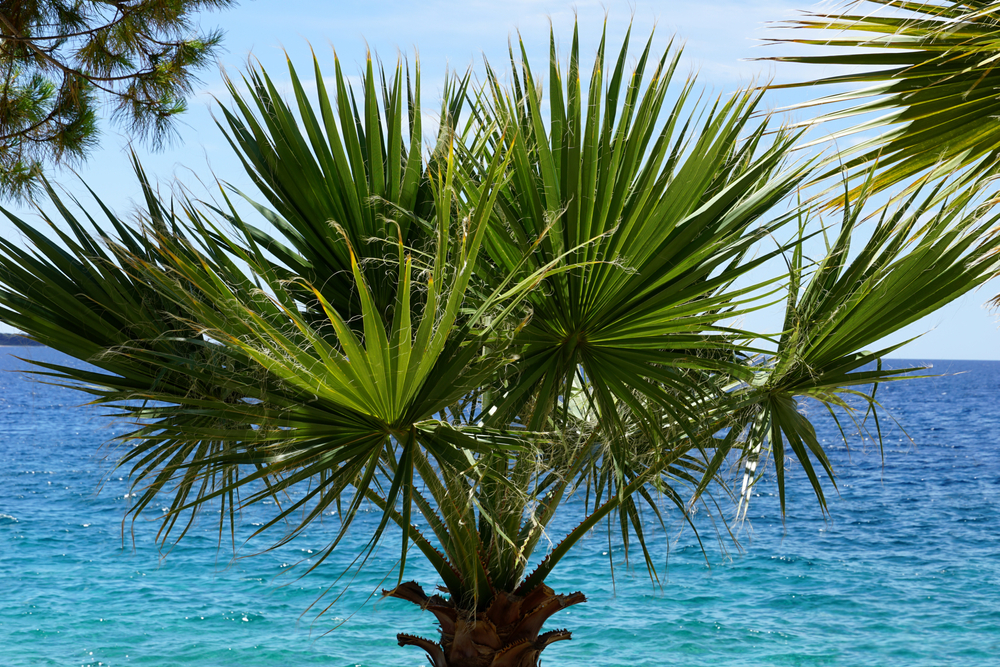
Native to Southern California and Arizona, the California fan palm is a combination of palmate and fan palm that grows up to 60 ft tall. It has a trunk that grows a diameter of two feet and about 30 green fan-shaped leaves.
It has a moderate growth rate since it grows slowly in height but produces leaves fast. When the leaves are old and dead, it becomes a petticoat-looking skirt from the crown to the ground.
The fruit it produces is oval to round in shape and half an inch in length. California fan palms need full sun exposure and are planted in clay soil.
3. Classical King Palm (Archontophoenix cunninghamiana)
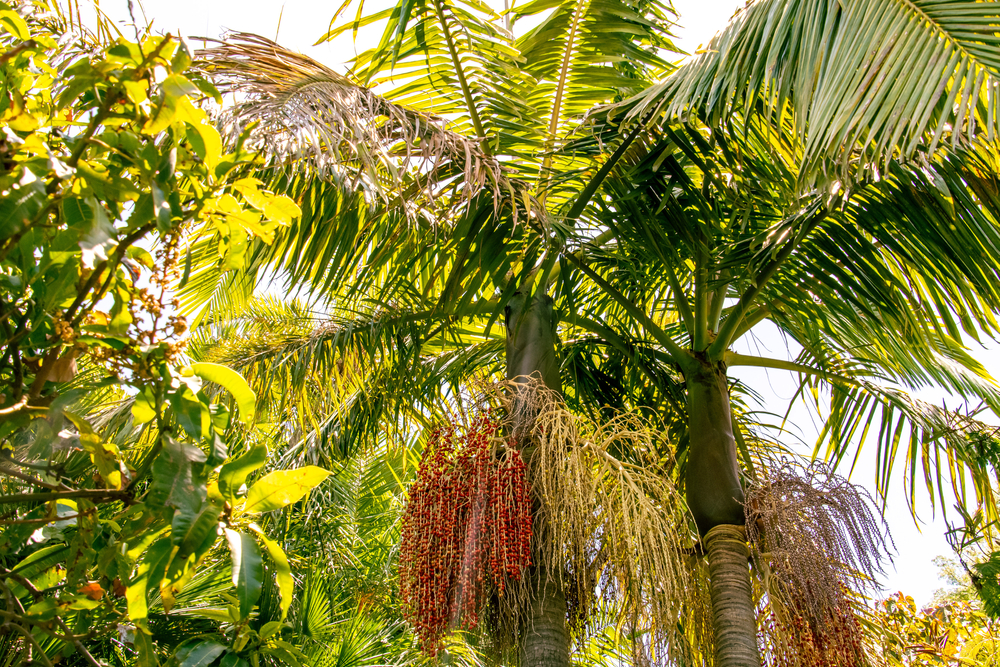
Native to Australia, the classical king palm is a fast grower, but it is relatively shorter compared to the matriarchal queen palm. It only grows up to 50 ft tall with pinnate leaves and a gray trunk that is approximately 18 in thick.
The canopy spread is up to 15 ft with self-pruning fronds that are easily pulled and removed. King palms grow best in partial or full sunlight.
However, full sunlight can cause it to have brown leaf tips. It is a solitary palm that grows a single trunk. Moreover, it tolerates cold temperatures up to 25°F.
4. Dwarf Sugar Palm (Arenga engleri)
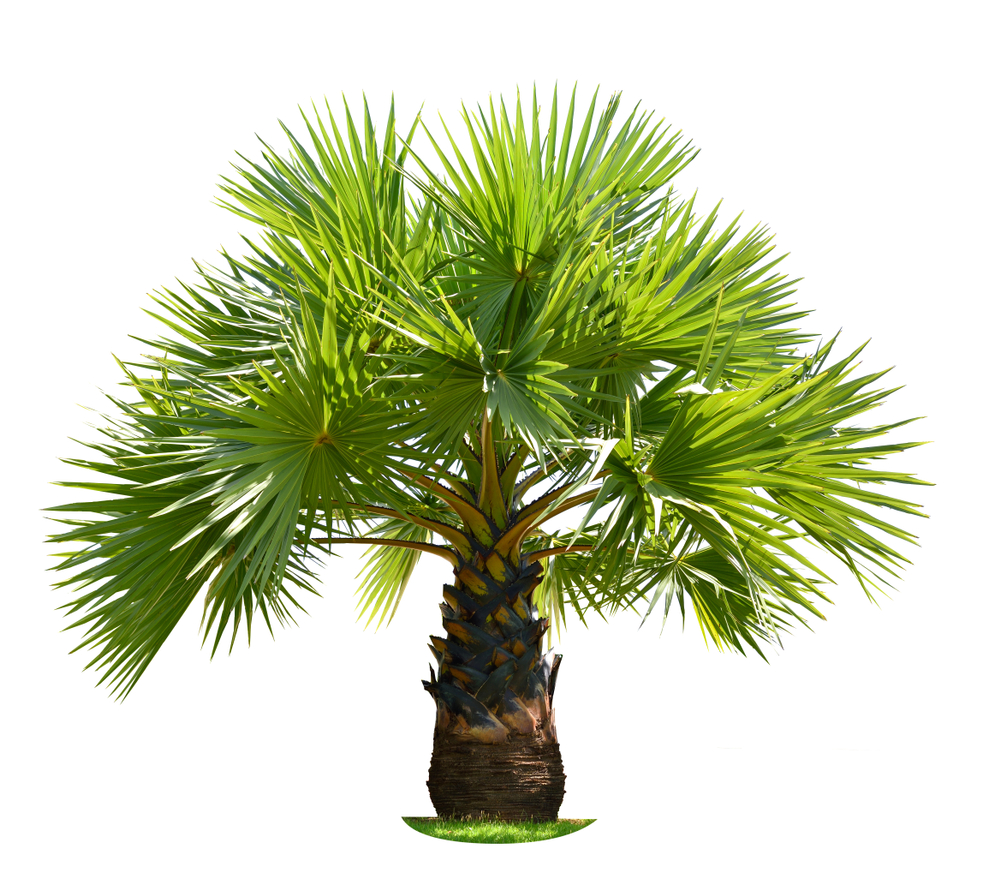
The dwarf sugar palm is found across several countries in Asia, specifically the Philippines, Taiwan, and the Ryukyu Islands. It is a pinnate suckering palm that reaches a mature height of up to 12 ft tall.
Its trunk is slender and ringed with olive green leaves. It naturally clumps and grows in clusters, providing a sense of privacy to any garden.
The flowers it produces can be both male and female and the palm has the ability to self-reproduce. To get the best-looking dwarf sugar palm, it needs moist soil, regular fertilization, and partial to full sunlight.
5. Mediterranean Fan Palms (Chamaerops humilis)
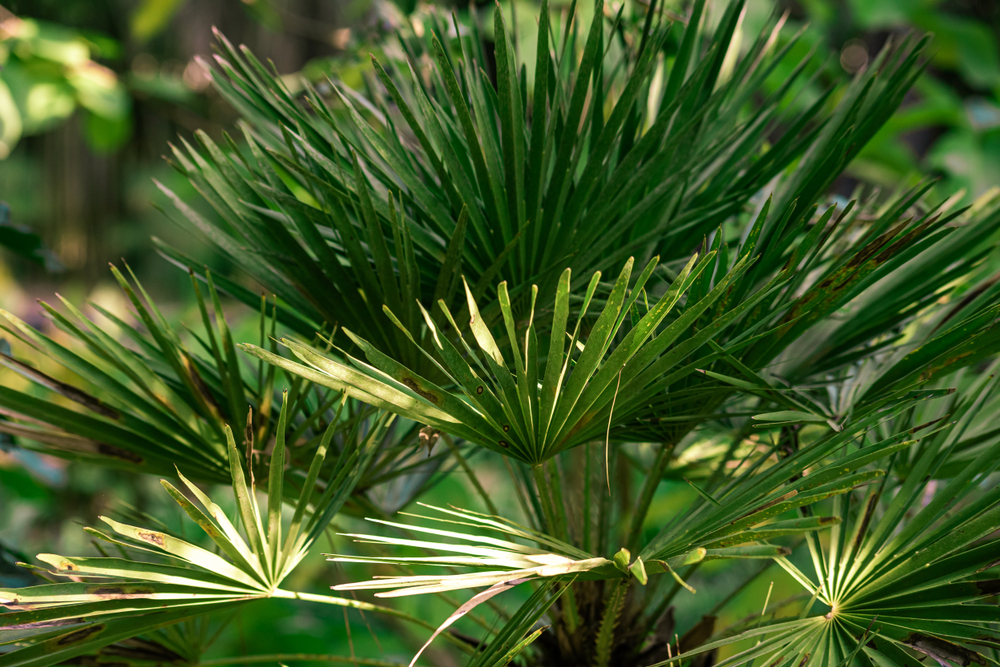
Locally found in the Mediterranean seas, the Mediterranean fan palm is a short type of palm reaching a mature height of only 15 ft.
It is one of the hardiest and toughest palms and can tolerate cold temperatures of about 10°F and up to 115°F heat.
The trunk is only about 12 inches thick with rough pale green leaves. The Mediterranean fan palm has fan-shaped leaves with pointed spines that can grow up to three feet long.
This is a suckering palm that grows multiple stems, making it especially attractive when trimmed. It grows better in well-drained alkaline soil and full, hot sun exposure.
6. Miniature Blushing Palm (Actinokentia divaricata)
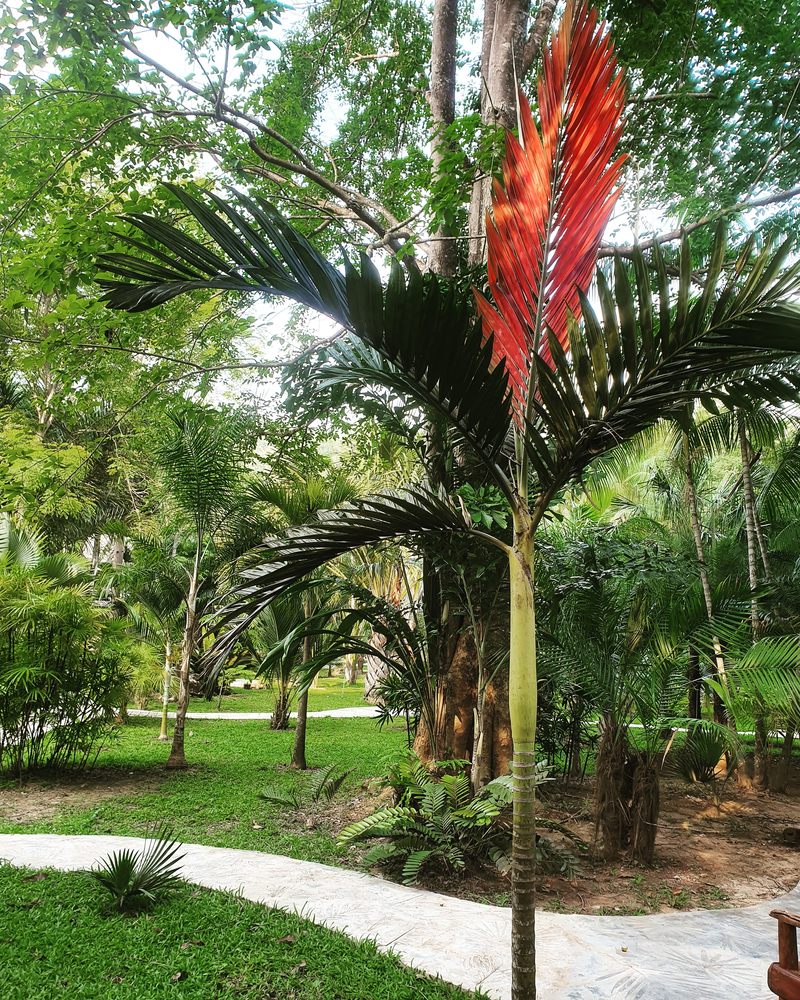
Originating from the low mountainous rainforests of New Caledonia in the southwest Pacific Ocean, the miniature blushing palm is a pinnate palm with a thin trunk and shafted crown.
Its mature height reaches only up to 20 ft and the diameter of the trunk is about four inches.
The leaves are mostly yellow-green but new leaf growth is somewhat red. The feather-like leaves can arch for more than a meter, resembling an umbrella.
Palms of this kind are extremely rare since they grow extremely slowly. They need a warm coastal climate with partial sunlight to thrive.
7. Pindo Palm (Butia capitata)
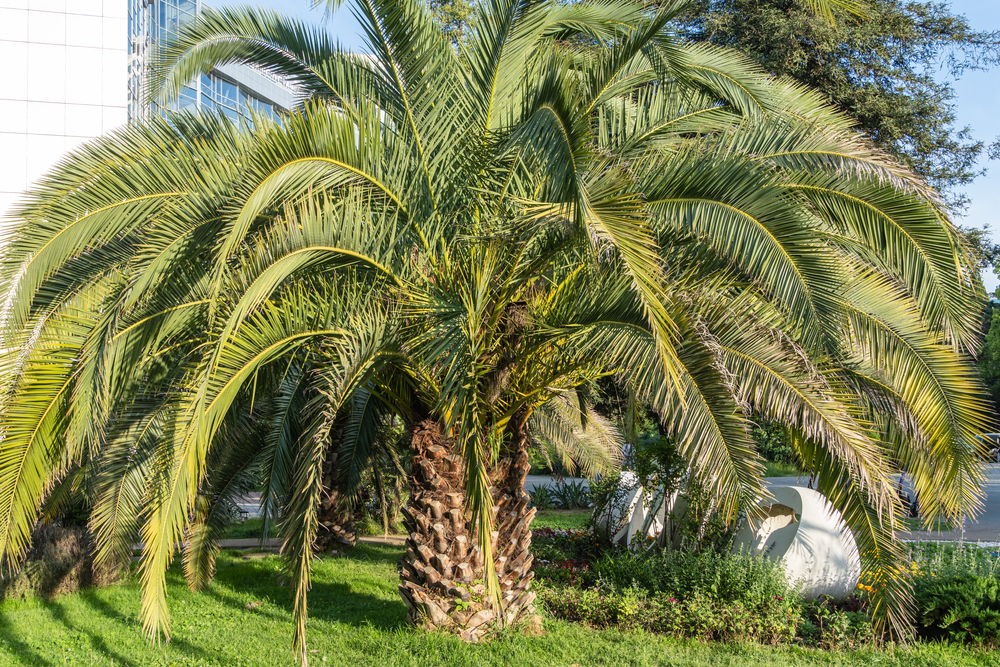
Also known as the jelly palm, the pindo palm is a handsome, small evergreen palm native to Brazil and Uruguay. The palm is a pinnate palm with a sturdy trunk that measures 18 inches in diameter.
It is a slow-growing palm that grows up to 20 ft tall with up to 60 pairs of leaves. The fruit it bears is sweet and varies in color from orange to yellow.
It is a durable easy-to-grow palm that tolerates full sun exposure and cold temperatures of up to 16°F. Pindo palms grow easily in well-drained soil, with no problems with diseases or pests.
8. Queen Palm (Syagrus romanzoffiana)
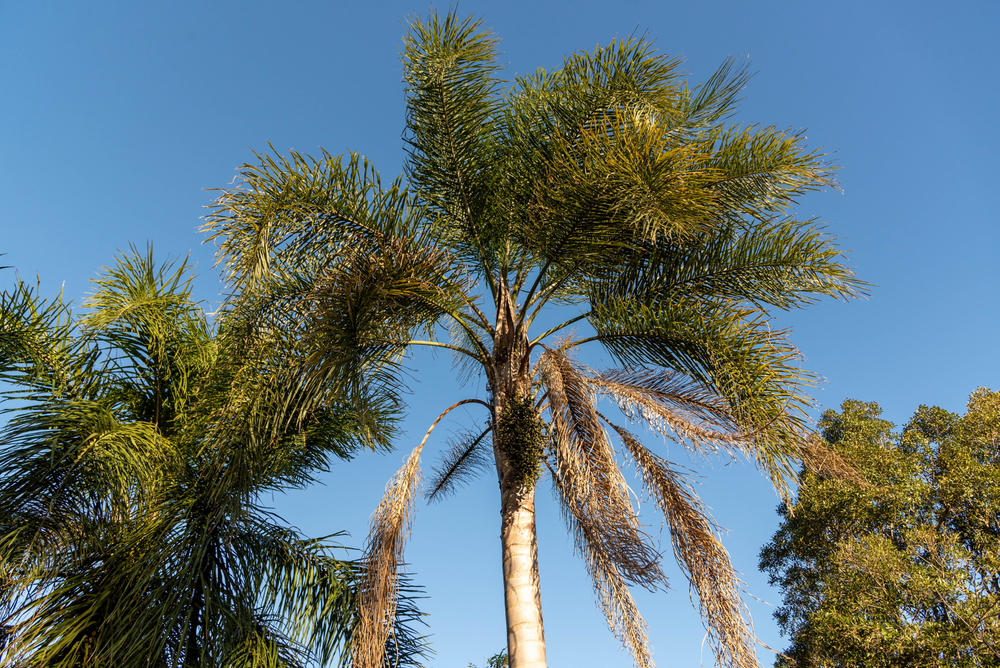
Queen palms are fast-growing and aggressive palms that are native to South America, specifically Argentina, Brazil, and Paraguay. For decorative purposes, the queen palm is usually paired and planted side by side with the king palm.
It is an elegant palm that carries full crowns and grows tall up to 70 ft in height, increasing two feet every year. The leaves are long and pinnate and have self-pruning capabilities.
It can grow in cold climates as low as 20°F but can still be potentially damaged. Moreover, they are drought tolerant and are easily grown from seeds or by replanting.
9. True Date Palm (Phoenix dactylifera)
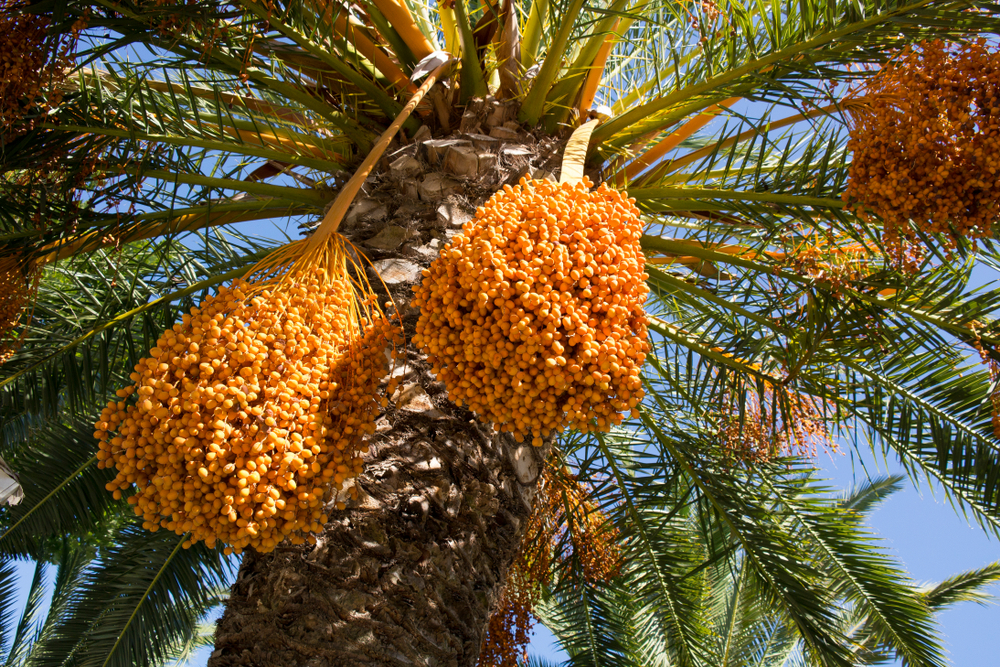
A native of northern Africa and commonly found in San Diego, the true date palm or simply date palm is a popular ornamental tree in resorts and residential areas. It is a tall, exquisite palm that can reach up to a hundred feet in height.
The trunk is broad and gray with 20 ft long pinnate leaves. The canopy can be up to 40 ft wide, bearing sweet fruits that are usually orange to red.
This is a hardy palm that can withstand cold temperatures and must be grown with male and female palms to bear fruits. It is a common palm that is easy to grow with full sunlight.
10. Washington Fan Palm (Washingtonia robusta)
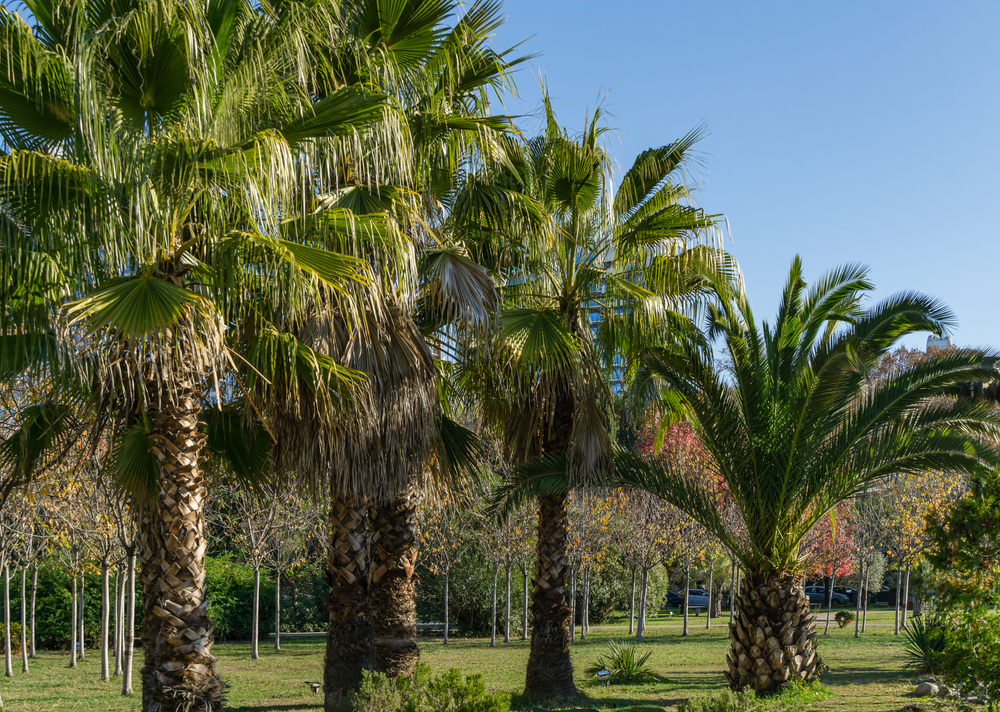
Commonly known as the Mexican fan palm, the Washington fan palm is locally found in Sonora and Baja Mexico. Moreover, it has been naturalized in California and Arizona.
It is a single-stemmed palmate palm tree that reaches a height of up to a hundred feet tall. The trunk is large, gray, and vascular with a diameter of 12 in.
When the leaves are old and dead, they droop down creating a skirt-like structure. It has leaves up to five feet long and spherical fruits. Although it requires full sun, it is also a hardy plant that tolerates as low as 18°F.
Frequently Asked Questions
How did palm trees come to California?
In the past, the Cahuilla Indians used palm trees for food, shelter, and making materials including baskets and clothing. The first date palms were planted in 1769 by missionaries for decorative and religious purposes.
Thanks to its iconic palm trees, California has long attracted visitors with its tropical vibe since the transcontinental railroad was built in 1876.
As part of the preparations and beautification for the 1932 Olympics, 25,000 palm trees were planted across Los Angeles.
Additionally, the effort to decorate the city was also an unemployment program that employed 400 people. Most palm trees live up to a hundred years, which is why some of them are nearing the end of their life cycle today.
Can I find palm trees in San Diego?
Yes! In fact, there are six palm tree types found in San Diego: Canary Island date palm, date palm, king palm, queen palm, Mexican fan palm, and pygmy date palm.
Mexican fan palm is the most popular palm in San Diego and is found on roads, beaches, and resorts.
Which palm is popular for gardens in California?
The beauty of all palms is undeniable, but only a few are suitable for residential ornamental planting since height is a deciding factor.
For instance, the California fan palm and the Mexican fan palm aren’t the best choices for home gardens since they grow massively tall.
Thus, the most popular palm for home gardening is usually short palms like the true date palm and pygmy date palm.

